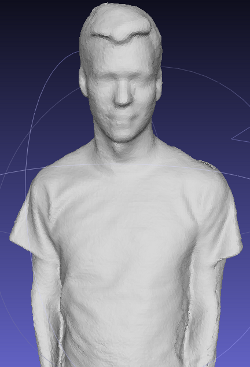Guest post by Aravind Ezhilarasan, NC School of Science and Math
As I walked up to Gross Hall at Duke University, I felt nervous with butterflies in my stomach and honored to be able to interview Chris Tralie, a mathematician, computer scientist, musician, and music enthusiast. My hands were getting clammy, I was starting to have second thoughts about doing the interview, and I was shivering, not because of the chilly winter weather, but rather due to the contradicting feeling of giddy, childish excitement that was racing through me.
I had looked into his research, but had trouble making sense of it and was extremely puzzled as to how someone went from computer science to electrical engineering to mathematics.
With all this on my mind, I walked up the steps of Gross Hall.
Tralie, a doctoral candidate in Duke’s Electrical and Computer Engineering department, met me at the front door and led me up to a conference room where I asked him my first question: “Could you explain your research to me, a high school senior?” He hesitated a second, then jumped into the best lecture of my life.
Tralie is currently working on the use of a simple geometric concept, loops, to identify and label songs by genre. He explained that he takes a song and tracks the loops in the song: intro, verse, chorus, then back to the verse (one loop), then back to the chorus, then back to the verse (two loops), etc.
He then takes the raw data he gets and turn it into a diagram. He explained that he maps the raw data out in a multidimensional environment, which has twelve dimensions to represent each note in a scale and more than forty other dimensions to represent different instrumentation in a song. It is impossible to visualize any object that has more dimensions than the three that we are acclimated to so Tralie then translates this multidimensional curve into three dimensions. You can check out the final product of this process for any song on his website, loopditty.net .
At this point of our exchange, my mind was well past blown.
Noticing my shocked, surprised, and ecstatic expression, he chuckled. I explained to him that I love what he is doing with this simple concept, but am still lost as to how one translates a multidimensional or high dimensional object into something three dimensional and perceivable. He then stepped back and explained this amazing process.
According to Tralie, when a light is far enough from an object, its rays are so close to being parallel that they are just taken to be parallel. When you shine this far-off light on a three-dimensional object, you get an analyzable two- dimensional object. In this same way, Tralie plays the role of the light for each extra dimension in his high dimensional models so he can simplify it down to a analyzable three dimensional object.
I asked him about his life and what made him switch from electrical engineering to computer science to a combination of computer science and mathematics. He then flashed back to his time as a kid. He explained that his goal in life as a young boy was to make video games. He always wanted to be the man behind the countless hours of entertainment he enjoyed. To reach this goal, he went into computer science and slowly realized electrical engineering was also a big player in reaching this goal. Through these experiences he went from computer science to electrical engineering. From there he went to a couple of transitional projects and eventually ended up at Duke University where he took on his long-lost hobby of mathematics and with the inspiration from his music appreciation days in his college eating club, he took on the genre labeling project.
Finally, I asked him where he wanted his brainchild to be in the next three to five years. He explained that his genre labeling project is only the first step. He plans to take the looping concept that drives the project and apply it to many other scenarios. The point of his genre labeling project is to help him fully understand this concept and to work out all the possible problems that can occur. Eventually, he plans on using it in situations like security where instead of tracking loops in songs, it will track loops in security footage (someone walking on and then off the screen would be one loop).
As I left that building and made the trip back to the North Carolina School of Science and Mathematics, I felt content. I had walked into that building anxiously, feeling small and wondering what my interviewee would think of me when he realized I knew very little about his research and how someone switched between so many fields of science.
I walked out feeling well informed, understanding the transition in one’s thoughts and interests throughout the path of life, and with a new friend.



